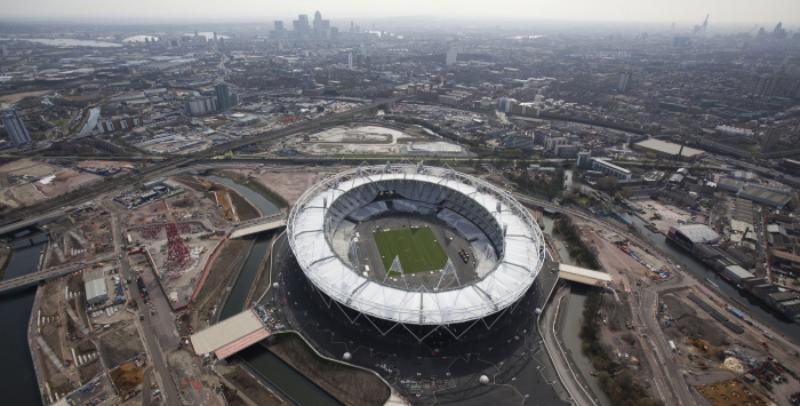London 2012: a Games eco-check

All these targets are expected to be achieved. One aim that has proved unachievable is the plan to provide 20% of the energy needed for the Games from local, renewable sources. A 120-metre high wind-energy plant, which would have provided a large amount of this power, had to be cancelled for “technical reasons.” Instead, photovoltaic facilities and a three-megawatt biomass heating plant should provide 9-10% of the total energy supply.
The organisational committee is confident that the actual CO2 emissions will be well below the 3.4 million tonnes predicted in 2010. Reasons for the savings include a 90,000m sq reduction in total surface area for the buildings, as well as the decision to loan rather than specially make equipment such as seats and barriers. This has already led to a 50% reduction in CO2 emissions in this particular area and there is still room for further improvement.
Savings have been identified
The sustainability strategy of the Games doesn’t just include the CO2 balance, rather it has five main topics: climate change, biopersity, waste, social participation and healthy living. In April the organisers of the Games presented their first sustainability report that displays the progress in this area.
From an early stage the organisers set ambitious goals regarding energy efficiency and sustainability of the permanent Olympic buildings: their CO2 emissions should be on average 15% lower than the 2006 UK reference figures for new buildings. The first new building to be finished – the Velodrome – actually managed a 31 percent decrease. In addition, the new buildings should all qualify for the ‘Excellent’ rating in the British BREEAM certification system. The drinking water usage in the competition areas should be 40% below the average in London (currently around 160 litres per person per day), while in the Olympic Village it should be around 35% below this level. No less than 50% of the construction materials should be delivered to the sites either by train or by boat. Further measures include the recycling of 90% of all demolition waste and the replacement of around 30% of the cement with materials that are lower in CO2.
As early as 2010, the organisational committee LOCOG as well as the Olympic Delivery Authority (ODA), which is responsible for the competition sites, presented the first complete estimate of the CO2 balance for the Games. This states that “London 2012” will produce about 3.4 million tonnes of CO2 during its seven years. Around half of the energy is required for the building of the competition areas, the Olympic Village and the Olympic Park, making it “grey energy”. This percentage is high because the balanced usage duration of the buildings is so small – just a few weeks. The usage of the competition sites after the Games is not considered in the estimate. Especially severe is the “grey energy” for the Olympic Park and Village, which alone is responsible for about 1.2 million tonnes of CO2.
The other half of this carbon footprint (also 1.7 million tonnes) will come from running the Games, the arrival of visitors, officials and athletics, the transport infrastructure, catering and temporary structures (like VIP tents, chairs, barriers, etc.). The energy consumption of the competition areas – around 15,000 tonnes – pales in comparison.
The organisers of large events have to increasingly answer critical questions: is the whole thing really necessary? Which environmental impacts and social side effects will they have? This is not just the case in Germany, where arguments over green field areas have already begun in anticipation of the (not yet granted) Winter Games 2018, but also in the United Kingdom. There, the next Summer Games 2012 will take place – and it will be the first time that each tonne of CO2, each hectolitre of sewage and each tonne of rubbish is counted and balanced.
This makes sense – those who begin early enough with the numbers and the figures can discover savings potential that would normally go unnoticed. In London, all the environmental effects from the entire preparation and event phase of the Olympic Games and Paralympics should be clearly recorded, from 2005, when London won the bid, until 2012.
